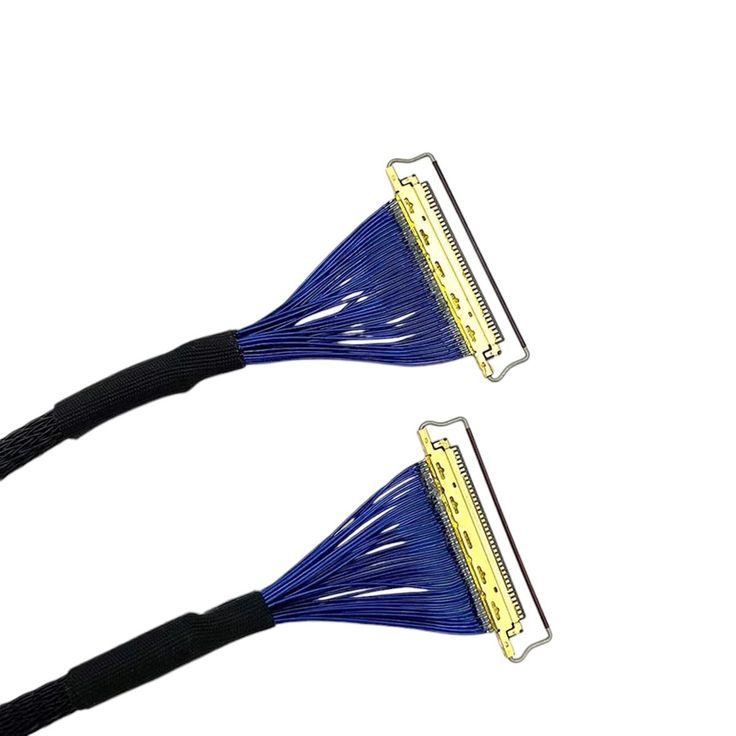Building micro coax cable assemblies requires precision and attention to detail, especially since these cables are often used in high-frequency applications like RF (radio frequency) or high-speed data transmission. Here are some tips for creating effective and reliable micro coaxial cable assemblies:
1. Choose the Right Cable and Connector
- Cable Type: Ensure the cable is designed for the specific application, like RG series, or customized micro-coaxial cables with features like low-loss or high-frequency stability.
- Connectors: Select connectors (e.g., MMCX, Micro-coax, Micro-BNC) that match the cable type and ensure a good, secure connection. Ensure they are rated for the required frequencies and environmental conditions (e.g., waterproof, vibration-resistant).
2. Precision Stripping
- Careful Stripping: For micro coaxial cables, stripping the insulation precisely is critical. You want to avoid damaging the center conductor or the dielectric material. Use a stripping tool specifically designed for coax cables, with adjustable settings to ensure the proper length of stripping.
- Strip Length: Follow the manufacturer’s guidelines for strip length. Too much exposed conductor can lead to signal loss, while too little could result in poor contact.
3. Use Proper Soldering Techniques
- Low-Temperature Soldering: Use low-temperature solder and a fine-tipped soldering iron to ensure precision when working with micro coax cables. This reduces the risk of damaging delicate components.
- Avoid Excess Solder: Too much solder can create unwanted capacitance, affecting signal integrity. Apply solder only where needed.
- Welding or Crimping (if applicable): In some cases, welding or crimping may be preferred over soldering. These methods can provide a more durable connection, particularly in high-vibration environments.
4. Minimize Losses and Interference
- Twist Lengths and Routing: For micro coax cables carrying high-frequency signals, ensure that the twist and routing minimize any losses due to bending or signal reflection.
- Shielding: Use well-shielded cables and connectors to protect against electromagnetic interference (EMI). Proper grounding and shielding methods are crucial for preserving signal quality.
5. Precision Alignment
- Center Conductor Alignment: Ensure the center conductor is aligned properly within the connector. This will help with achieving a solid connection and minimizing signal loss.
- Jacket Alignment: Pay attention to the jacket’s positioning in the connector. A misaligned jacket can cause strain on the cable, leading to failure over time.
6. Testing and Quality Control
- Cable Testing: After assembly, it’s important to test the cable for continuity, signal integrity, and performance. Using a time-domain reflectometer (TDR) can help detect issues like cable impedance mismatches or short circuits.
- Visual Inspection: Regularly inspect the solder joints, connectors, and cable to ensure there are no visual defects, such as broken strands or poor insulation.
7. Environmental Considerations
- Temperature and Humidity: Ensure that your assembly process considers environmental factors. Micro coax cables can be sensitive to temperature changes, humidity, and exposure to chemicals, so using heat-shrink tubing or other protective coatings can prolong the life of the assembly.
- Flexibility and Durability: Depending on the application, you may need to choose cables with enhanced durability or flexibility for high-movement environments.
8. Proper Handling
- Gentle Handling: Micro coax cables are delicate. Handle them gently to avoid damaging the cable or connectors. Always use proper strain relief to avoid putting too much pressure on the cable or connector ends.
- Protective Packaging: If the assembly is being stored or shipped, use anti-static bags and protect the cable from excessive bending or twisting.
By following these tips and adhering to precise assembly processes, you can produce reliable and high-performance micro coax cable assemblies suited for demanding applications.
Darlox is a brand that produces high-quality micro coaxial cable assemblies, primarily used in precision applications requiring high-frequency performance, minimal signal loss, and robust shielding. These cables are often employed in industries like telecommunications, medical devices, automotive, aerospace, and robotics.


Comments are closed